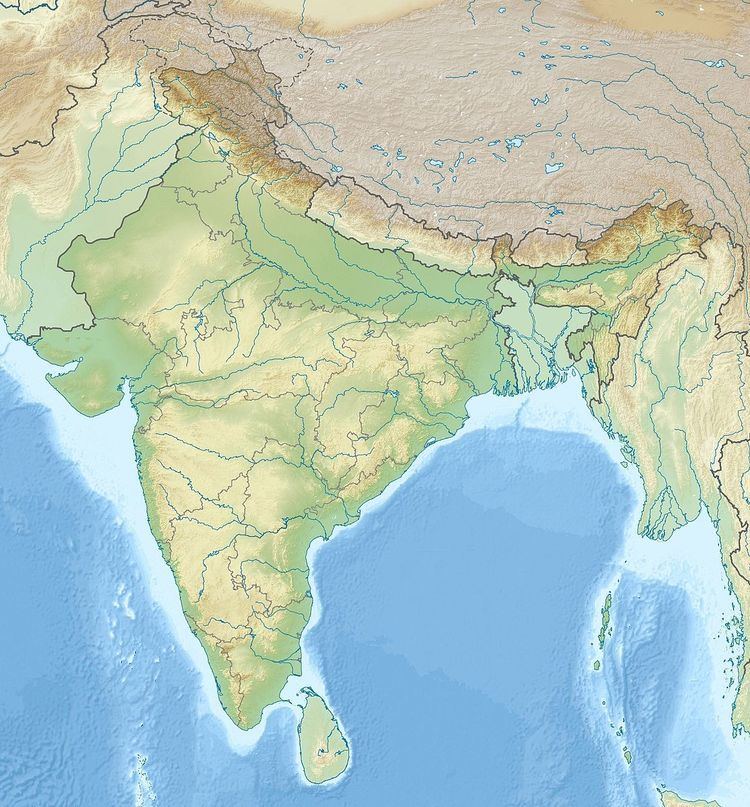Country India Reactor type PHWR Construction began 1963 | Commission date 16 December 1973 Units under const. 2 x 700 MW Phone 098290 27709 | |
 | ||
Operator(s) Nuclear Power Corporation of India Ltd (NPCIL) Units operational 1 x 100 MW1 x 200 MW4 x 220 MW Hours Open today · Open 24 hoursFridayOpen 24 hoursSaturdayOpen 24 hoursSundayOpen 24 hoursMondayOpen 24 hoursTuesdayOpen 24 hoursWednesdayOpen 24 hoursThursdayOpen 24 hoursSuggest an edit Similar India Post Office, Kota Super Thermal Power St, RSEB Sub Station, Baroli Temples, University Of Kota | ||
Rajasthan atomic power station
The Rajasthan Atomic Power Station (RAPS; also Rajasthan Atomic Power Project - RAPP) is located at Rawatbhata in the state of Rajasthan, India.
Contents
History
The construction of the Douglas Point Nuclear Generating Station Canada began in 1961 with a CANDU (CANada Deuterium Uranium) pressurised heavy water reactor (PHWR) capable of producing 220 MW of electricity. Two years after construction of the Rajasthan Power Project (RAPP) commenced, with two similar reactors built in the state of Rajasthan. Ten years later, in 1973 RAPS-1 was put into service. In 1974 after India conducted Smiling Buddha, its first nuclear weapons test Canada stopped their support of the project, delaying the commissioning of RAPS-2 until 1981.
In the context of the Indian atomic program, two more PHWR with an output of 220 MW each were built. They cost around 570 million dollars. RAPS-3 became critical on 24 December 1999, RAPS-4 became critical on 3 November 2000. Commercial operations began on 1 June 2000 for unit 3, and on 23 December 2000 for unit 4.
Two more reactors (RAPS-5 and RAPS-6) with 220 MWe have also been built, with unit 5 beginning commercial operation on 4 February 2010, and unit 6 on 31 March 2010.
Two of the new Indian-designed 700 MWe series of reactor (RAPP-7 and RAPP-8) are under construction at Rajasthan.
In November 2012, the International Atomic Energy Agency (IAEA) intensively audited over several weeks two reactors at the Rajasthan Atomic Power Station for safety. It has concluded that the reactors are among the best in the world, the indigenously made 220 MW atomic plants can withstand a Fukushima type of accident, even suggesting that the "safety culture is strong in India" and that India emerged a winner with a high global safety rank.
First concrete for unit 7 was poured on 18 July 2011, with commercial operation expected by 2016. The two reactors will cost an estimated Rs 123.2 billion (US$2.6 billion).
Incidents
By 2003 RAPS-1 had experienced numerous problems due to leaks, cracks in the end-shield and turbine blade failures, had undergone repairs and appeared to be generating 100 MW electricity, with RAPS-2 reportedly generating 200 MW.
On 29 August 2006, a 90% iron meteorite weighing 6.8 kilograms fell in Kanvarpura village, near the power station. The Deputy Director-General (western region) of the Geological Survey of India, R.S. Goyal, said that devastation on an "unimaginable scale" would have ensued had the object struck the station.
In June 2012, 38 workers were exposed to tritium when a welding operation went wrong inside the protected environment of the reactor.
